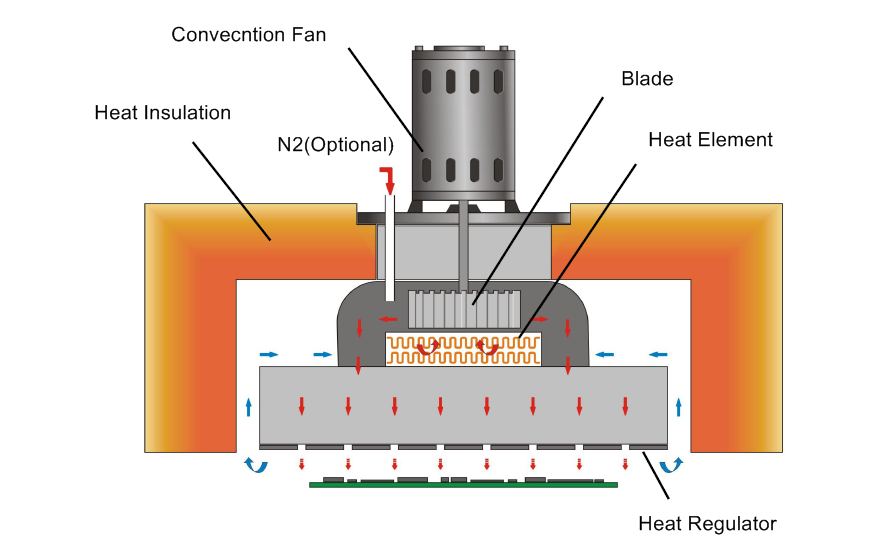

You make some good points about "professionals" appearing to put off "amateurs" from having a go themselves. More details about myself can be found via the blue banner advert at the top of the page.


I run a reflowing company in UK with many customers in Europe. This is not sharing skills - that's just scaring people and keeping one's skills. I am going on holiday now, so i won't try this out before at least a month, but i'll let you knowĭen_el_vegano wrote:I must say that i find it very curious to have a person that is professionally repairing the flexing problem coming up here and say "be careful with what you do, because you can harm to your material - best you give me (or one of the pros) much more money and we do it good for you".
#Reflow solder heat gun professional
But he won't because he's making money out of it, and so i don't see what he is doing on this thread, if he's not sharing any experience with us! I hate this "professionalism" that wants us to believe that only a professional can do a good job! This is a forum and should not just be a place for : my question is "once i did the reflowing, do i have to do something special with the pieces or can i just put them back at their place?" - Thanx for sharing your experience with me I would prefer RealBlackStuff telling us how he does it in order to fix the problem (with a little bit of more chances of success). I must say that i find it very curious to have a person that is professionally repairing the flexing problem coming up here and say "be careful with what you do, because you can harm to your material - best you give me (or one of the pros) much more money and we do it good for you". It includes special liquid as a flux, syringe and a clamp that takes the chip itself.
#Reflow solder heat gun how to
There is a good method how to get the BGA chip off the board so that balls will stay on the chip. And if you have no experience in this, it's recommended that you train yourself a bit with some old motherboard or the like to get "the feel". I've used this method for various memory chips on VGA cards, GPU's etc. I used heat gun with adjustable temperature and the reading was from its own LCD. Then heat the GPU from the top for few minutes (like 3-4). On lead-free it won't do anything to resistors and caps. Always pre-heat the board from the bottom for few minutes with at least 250 degrees.

I've always used higher temperatures than 230-250 degrees because chip itself lowers the heat significantly. Having dealt with BGA reflow/unsoldering/resoldering for some years, I didn't have a necessity of doing this on T4x since last week on my friends T42 with Radeon 7500. My co-workers were pretty skeptical, so I'm looking forward to their inquiries tomorrow.Īlso after that big dismantlement job I'm confident in my ability to work on laptops - as long as I have a service manual! I organized the screws into little cups for each page or two where screws were removed, and put scraps of paper in the cups with the page numbers. That's a lot of junk to heat up, and most likely the bad connections are in the middle of the bugger. There are two layers of BGA in that module too, one under the ram (and possibly under the other chip) and one under the entire module. I was a bit conservative with the heat, I got it until I read 230 then pulled the heat back and it immediately dropped back to 220, so I think I only got the top surface of the graphics module to 230, but I figured too much was probably worse than too little - and it worked fine. I happen to have a job in the IC industry and use a heat gun at work regularly to remove surface mount ICs, so this was something I could do at my bench over lunch easily. I joined just to give you guys props for letting me know how to fix this issue.


 0 kommentar(er)
0 kommentar(er)
